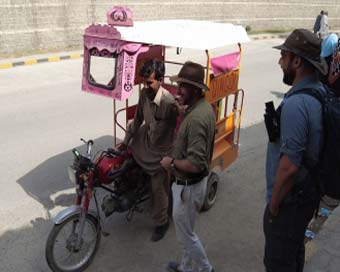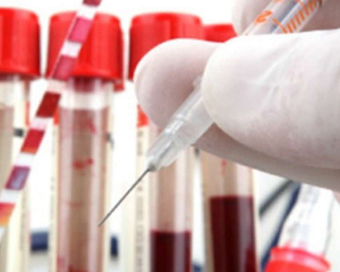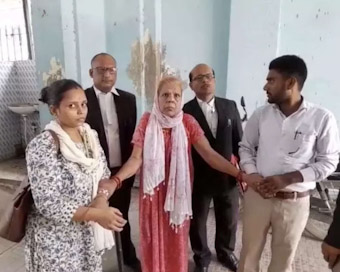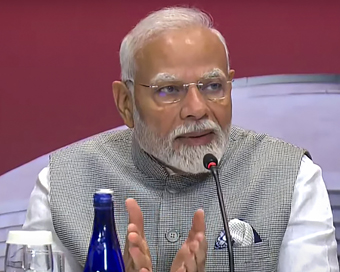 PM Modi visit USA
PM Modi visit USA Only the mirror in my washroom and phone gallery see the crazy me : Sara Khan
Only the mirror in my washroom and phone gallery see the crazy me : Sara Khan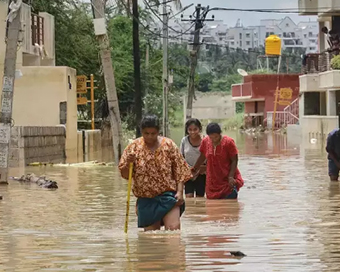 Karnataka rain fury: Photos of flooded streets, uprooted trees
Karnataka rain fury: Photos of flooded streets, uprooted trees Cannes 2022: Deepika Padukone stuns at the French Riviera in Sabyasachi outfit
Cannes 2022: Deepika Padukone stuns at the French Riviera in Sabyasachi outfit Ranbir Kapoor And Alia Bhatt's Wedding Pics - Sealed With A Kiss
Ranbir Kapoor And Alia Bhatt's Wedding Pics - Sealed With A Kiss Oscars 2022: Every Academy Award Winner
Oscars 2022: Every Academy Award Winner Shane Warne (1969-2022): Australian cricket legend's life in pictures
Shane Warne (1969-2022): Australian cricket legend's life in pictures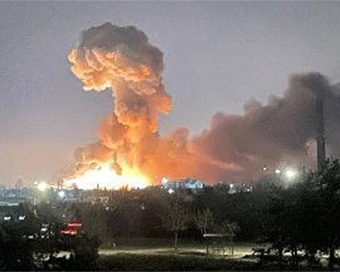 Photos: What Russia's invasion of Ukraine looks like on the ground
Photos: What Russia's invasion of Ukraine looks like on the ground Lata Mangeshkar (1929-2022): A pictorial tribute to the 'Nightingale of India'
Lata Mangeshkar (1929-2022): A pictorial tribute to the 'Nightingale of India' PM Modi unveils 216-feet tall Statue of Equality in Hyderabad (PHOTOS)
PM Modi unveils 216-feet tall Statue of Equality in Hyderabad (PHOTOS)Jakub Mensik overcame rain and an opponent chasing history when he stunned six-time champi
- KIPG: Son of a vegetable vendor, Bihar’s Jhandu Kumar eyes Worlds, 2028 Paralympics
- Hardik Singh credits hard work and team unity for receiving HI Midfielder of the Year award
- Djokovic, Alcaraz land in same half of Miami draw
- India to host 2nd Asian Yogasana Championships from March 29 to 31
- FA Cup: AFC Bournemouth secure 5-4 penalty shootout win vs Wolves to reach QF
RBI issues new framework for bad loans Last Updated : 14 Apr 2017 06:46:01 PM IST 
file photo
The Reserve Bank of India (RBI) has issued a new set of enabling provisions to resolve the problem of banks' mounting non-performing assets (NPAs), or bad loans.
Through the notification titled " Revised Prompt Corrective Action (PCA) framework for banks", the RBI has said the new set of provisions, effective from April 1, override the existing PCA framework, and are based on the financials of each bank as of March 2017. The new framework will be reviewed after three years.
Under the revised framework, if a bank crosses the third level of risk threshold (where a bank's common equity tier I capital falls below the threshold of 3.625 per cent by 3.125 per cent, or more) it will either be amalgamated or merged, or taken over by another entity.
"Breach of 'risk threshold 3' of CET1 (common equity tier 1) by a bank would identify it as a likely candidate for resolution through tools like amalgamation, reconstruction, winding up etc," the notification said.
The apex bank also said that in case a "bank defaults in meeting the obligations to its depositors, possible resolution processes may be resorted to without reference to the PCA matrix".
"A bank will be placed under PCA framework based on the audited annual financial results and RBI's supervisory assessment. However, RBI may impose PCA on any bank during the course of a year, including migration from one threshold to another, in case the circumstances so warrant."
The revised PCA framework is applicable to all banks, including small and foreign banks.
The new framework also places capital, asset quality and profitability as the key areas for monitoring. Besides, the over-riding indicators tracking capital, asset quality and profitability will be capital to risk assets ratio (CRAR), CET1 ratio, met NPA ratio and return on assets, respectively, the notification said.
A bank's "leverage will be monitored additionally as part of the PCA framework and any breach of any risk threshold will result in invocation of PCA," it added.
If a bank breaches the risk levels or leverage levels, RBI said "promoters/owners/parent in the case of foreign banks" will have to bring in capital to meet the special supervisory requirement.
Breach of risk threshold 2 will attract restrictions on branch expansion, as well as domestic and overseas higher provisions, as part of the coverage regime, RBI said.
Breach of risk threshold 3 will invite mandatory actions of threshold 1 and 2, along with restrictions on management compensation and directors' fees and any other corrective actions such as removal of officials and supersession or suppression of the board.
At its first monetary policy review of the fiscal on April 6, the RBI said it would come out with a revised PCA framework.
The NPAs of state-run banks at the end of last September rose to Rs 6.3 lakh crore (almost $100 billion), as compared to Rs 5.5 lakh crore at the end of June 2016.
For Latest Updates Please-
Join us on
Follow us on








172.31.16.186


